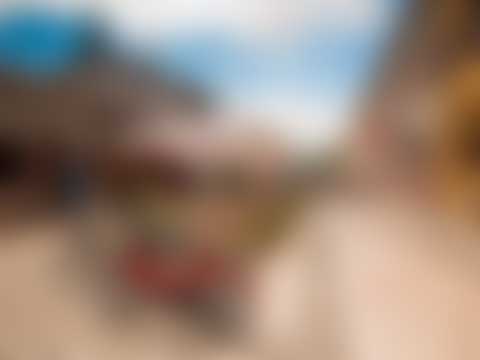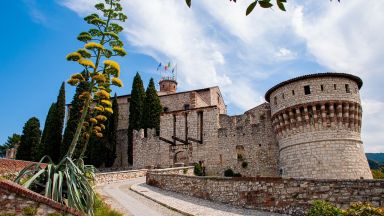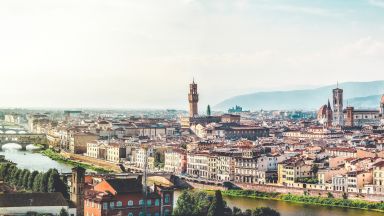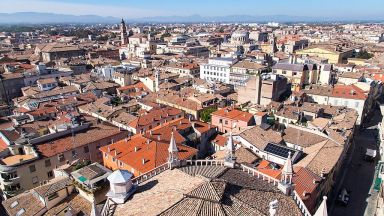Brescia: The Complete Guide
Legacies of Brescia’s past include significant Roman ruins, two cathedrals and a vast medieval castle. As a result, the town is filled with gaggles of kids on school excursions (if you’re here during term time, you’re bound to encounter them). Northwest of Brescia is the little-visited but beautiful Lago d’Iseo, while heading northeast brings you to Italy’s largest and most popular lake, Lago di Garda. Founded over 3,200 years ago, Brescia has been an important regional centre since pre-Roman times. Its old town contains the best-preserved Roman public buildings in northern Italy and numerous monuments, among these the medieval castle, the Old and New cathedral, the Renaissance Piazza della Loggia and the rationalist Piazza della Vittoria.
Brescia is a city and comune in the region of Lombardy, Northern Italy. It is situated at the foot of the Alps, a few kilometers from the lakes Garda and Iseo. With a population of more than 200,000, it is the second largest city in the administrative region and the fourth largest in northwest Italy. The urban area of Brescia extends beyond the administrative city limits and has a population of 672,822, while over 1.5 million people live in its metropolitan area. The city is the administrative capital of the Province of Brescia, one of the largest in Italy, with over 1,200,000 inhabitants.
Visiting Brescia for the first time and wondering what are the top places to see in the city? In this complete guide, I share the best things to do in Brescia on the first visit. Top help you plan your trip, I have also included an interactive map and practical tips for visiting!
This website uses affiliate links which earn a small commission at no additional cost to you.
History of Brescia
Brescia, steeped in ancient history, has its roots entwined with mythical tales of Hercules and a Ligurian king named Cidnus. Archaeological excavations reveal a settlement from 1,200 BCE, possibly inhabited by Ligures. The Gallic Cenomani made it their capital in the 7th century BCE, preceding its Roman assimilation in 225 BCE. Brixia, as it was known, aligned with Rome during the Carthaginian Wars and became a Roman civitas in 89 BCE.
During Constantine’s advance in 312 CE, Brixia played a pivotal role. The city endured Visigothic ravages in 402 and withstood a Huns siege in 452. The Lombards seized Brescia in 568, making it a duchy capital. Charlemagne captured the city in 774, ending Lombard rule. Brescia flourished in the Middle Ages but experienced turmoil, including a revolt in 1138 and sieges by emperors and Scaliger of Verona.
The city’s violin-making legacy emerged between 1490 and 1640. Sacked by the French in 1512, Brescia’s 16th-century wealth diminished. The Napoleonic era and Austrian rule followed, with Brescia rising against the latter in 1848 and 1849. Recognized for its resistance during World War II, the city tragically witnessed the Piazza della Loggia bombing in 1974.
10 Best places to See in Brescia
This complete guide to Brescia not only tells you about the very best sights and tourist attractions for first-time visitors to the city but also provide insights into a few of our personal favorite things to do.
This is a practical guide to visiting the best places to see in Brescia and is filled with tips and info that should answer all your questions!
Palazzo della Loggia (Brescia)

Location: Palazzo della Loggia, Piazza della Loggia, Brescia, Province of Brescia, Italy | Distance: 0.60km
Visiting Palazzo della Loggia (Brescia)
Duomo Nuovo (New Cathedral) and Rotonda

Location: Cathedral of Santa Maria Assunta, Duomo Nuovo, Piazza Paolo VI, Brescia, Province of Brescia, Italy | Hours: 7.30am-noon & 4-7pm Mon-Sat, 8am-1pm & 4-7pm Sun | Distance: 0.80km
Visiting Duomo Nuovo (New Cathedral) and Rotonda
Broletto and Piazza Paolo VI

Location: Piazza Paolo VI, Brescia, Province of Brescia, Italy | Distance: 0.80km
Visiting Broletto and Piazza Paolo VI
Brescia Castle

Location: Castle of Brescia, Via del Castello, Brescia, Province of Brescia, Italy | Hours: 8am-8pm | Distance: 1.00km
Visiting Brescia Castle
Santa Maria della Carità, Brescia

Location: Santa Maria della Carità, Via dei Musei, Brescia, Province of Brescia, Italy | Distance: 1.00km
Visiting Santa Maria della Carità, Brescia
Piazza del Foro and Roman Theater

Location: Piazza del Foro, Brescia, Province of Brescia, Italy | Distance: 1.10km
Visiting Piazza del Foro and Roman Theater
Brixia Parco Archeologico

Location: Parco archeologico di Brixia romana, Via dei Musei, Brescia, Province of Brescia, Italy | Hours: 9am-5pm Tue-Fri, 10am-6pm Sat & Sun | Price: adult/reduced €8/6 | Website | Distance: 1.10km
Visiting Brixia Parco Archeologico
Civici Musei d'Arte e Storia Santa Giulia

Location: Museo di Santa Giulia, Via dei Musei, Brescia, Province of Brescia, Italy | Hours: 9am-5pm Tue-Fri, 10am-9pm Sat, 10am-6pm Sun | Price: adult/reduced €10/7.50, combined ticket incl Tempio Capitolino €15/10 | Website | Distance: 1.30km
Visiting Civici Musei d'Arte e Storia Santa Giulia
Bonoris Castle

Location: Castello Bonoris Piazza Santa Maria, 36 25018 Montichiari BS Italy | Hours: Saturday 3:00pm-7pm; Sun 10:00am-12:00pm – 3:00pm-7:00pm (from May to October) (Last entrance 40 minutes before closing time). Closed on 1 April, 1 May, and 15 August. | Price: € 8.00. Combined ticket with admission to Lechi Museum | Website | Distance: 20.10km
Visiting Bonoris Castle
Padernello Castle

Location: Castello di Padernello Via Cavour, 1 25022 Padernello BS Italy | Hours: Tue-Fri: guided tours 9:00am-12:00pm/2:30pm-5:30pm; Sat 2:30pm-5:30pm; Sun 2:30pm-6:30pm. Last entrance one hour before closing time. Closed in August. | Price: adults: € 7.50 | Website | Distance: 26.60km
Visiting Padernello Castle
Best Time to Visit Brescia
Brescia in Summer: The summer season sees a surge in tourists, drawn by warm temperatures averaging around 24°C (75°F). While bustling, it’s the perfect time to delve into famous sights, museums, and the vibrant nightlife, with July and August being the busiest.
Brescia in Autumn (Fall): Autumn boasts pleasant weather with an average temperature of about 14°C (58°F). Considered the shoulder season, it strikes a balance between fewer visitors and appealing deals. It’s an excellent time for enjoying scenic landscapes, museum visits, and immersing yourself in the local ambiance.
Brescia in Winter: Winter marks the low tourist season, ensuring fewer crowds and better bargains. Despite colder temperatures averaging around 1°C (35°F), the season offers ample indoor activities, from museum visits to dining at excellent restaurants and experiencing the local nightlife.
Brescia in Spring: Spring is another shoulder season, bringing delightful weather with temperatures around 13°C (55°F). Offering a favorable blend of fewer crowds and attractive deals, it’s an ideal time to explore charming shops, landmarks, museums, and revel in the beauty of the surroundings. The season also invites you to experience the lively nightlife scene.
Average Temperatures in Brescia
- January 10°C 50°F 7
- February 12°C 54°F 10
- March 17°C 63°F 9
- April 20°C 68°F 11
- May 25°C 76°F 14
- June 31°C 87°F 12
- July 34°C 93°F 12
- August 31°C 89°F 12
- September 27°C 81°F 12
- October 22°C 72°F 12
- November 14°C 57°F 16
- December 9°C 49°F 8
How to get to Brescia
Travelling to Brescia by Plane: While Brescia boasts its airport for domestic flights, for a broader array of international choices, Milan Bergamo Airport (51 km) or Verona Airport (62 km) serve as convenient alternatives. The city is also well-connected by train, facilitating easy access to destinations around Lake Garda, including Desenzano del Garda and Sirmione, along with Milan and other major Italian cities.
Travelling to Brescia by Car: Brescia stands as a prominent city linked by the A4 motorway, extending from Turin to Venice. Positioned approximately an hour and a half westward is Milan, while to the east, Verona (1 hour) and Padova (around 2 hours) are viable options for day-trips.
Navigating the city centre is most convenient on foot, especially in pedestrianized areas like Piazza della Loggia. Additionally, a Metro train system operates efficiently, providing a seamless connection to the train station, a journey that would otherwise involve a 15-minute walk.


